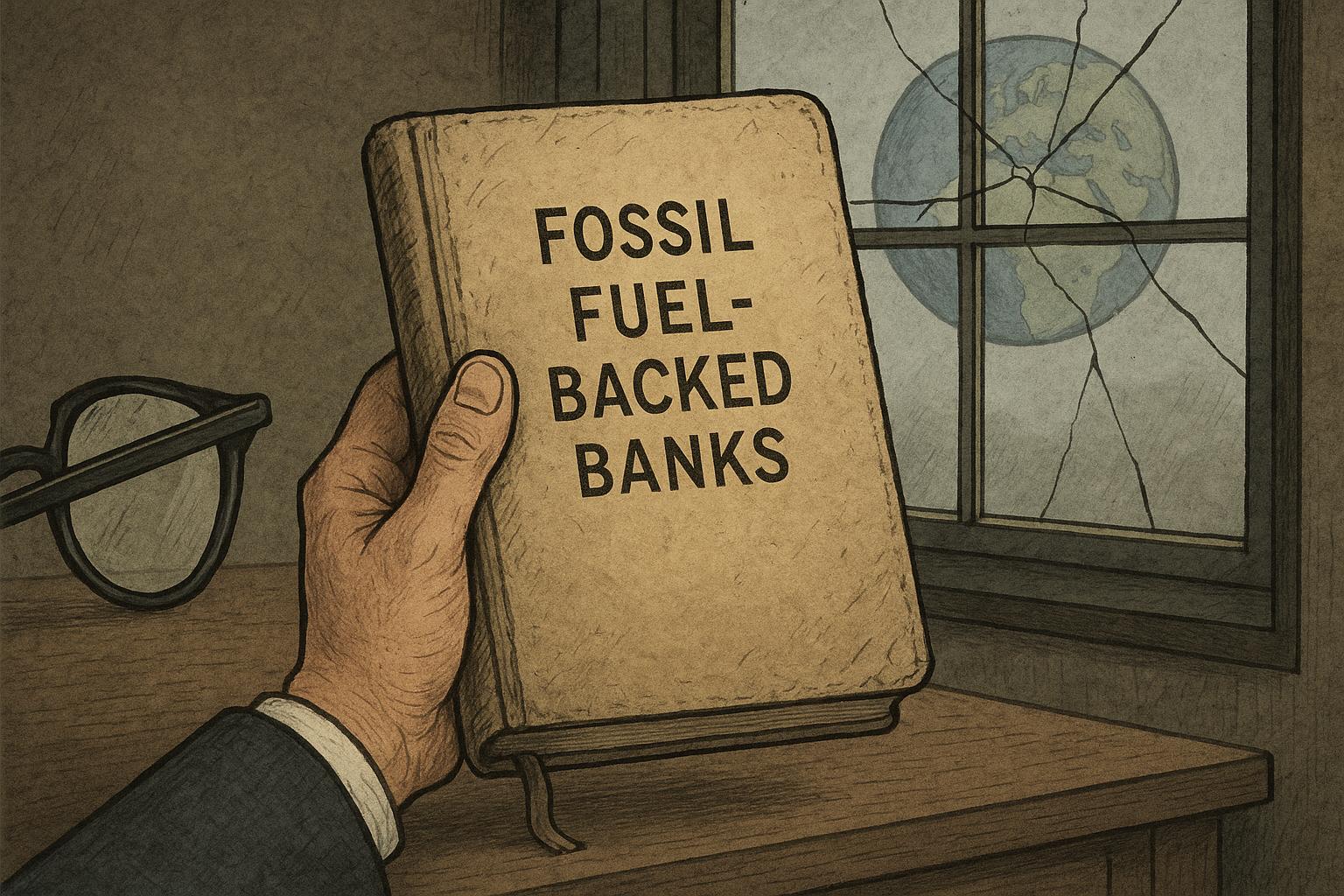A recent report by a London-based research centre reveals that global banks have made limited progress toward reducing financed emissions, with some institutions even diluting their climate commitments. This stagnation occurs despite growing global concerns and rising pressures on the financial sector to support the transition to a low-carbon economy.
The report highlights that, since the Paris Agreement in 2016, major banks have collectively channelled nearly $7 trillion into fossil fuel financing. This includes over $3 trillion specifically earmarked for fossil fuel expansion. US banks represent the largest portion of this financing, with JP Morgan Chase, Mizuho, and Bank of America topping the list as the biggest contributors to the fossil fuel sector last year. European banks such as Santander and Deutsche Bank also feature prominently, raising questions about the claims of some institutions regarding their climate leadership. While Deutsche Bank maintains it has significantly reduced financing for carbon-intensive projects and remains committed to a managed phase-out of fossil fuels, the broader financial sector continues to face significant scrutiny for supporting industries driving climate change.
Amid this challenging backdrop, some banks have revised their climate targets, reflecting the difficulties in influencing real economy emissions. HSBC, for example, has postponed its original 2030 net-zero emissions target, now aiming instead for a 40% reduction by 2030 and net zero by 2050. According to the bank's latest annual report, this adjustment stems from limited leverage over client companies, slow technological progress, fluctuating market demand, and policy uncertainties. Moreover, HSBC has undertaken an internal review of its loan-related emissions targets and removed its chief sustainability officer from the executive committee, moves that have raised concerns among climate activists about a potential retreat from climate commitments. Similar withdrawals from climate coalitions have been seen with other major US institutions, including Goldman Sachs, which recently exited the Net-Zero Banking Alliance amid political pressure related to anti-trust concerns.
In contrast, some banks are ramping up their climate finance efforts to enable a just and broad-based transition across sectors. NatWest has announced a substantial commitment to provide £200 billion ($269 billion) over the next five years to support client decarbonisation goals. This initiative notably includes financing for traditionally emissions-intensive industries such as steel, cement, and iron, acknowledging the importance of engaging these sectors in the energy transition. NatWest has also incorporated financing for nuclear energy and gas infrastructure supported by carbon capture, while notably excluding social financing from its strategy. The bank reported having already exceeded its previous target for climate and sustainable finance, demonstrating a more proactive stance amid an often fragmented sector response.
Some banks, such as ING, have achieved recognition for their climate strategies. ING was the first systemically important global bank to have its climate targets validated by the Science-Based Targets initiative (SBTi), confirming alignment with efforts to limit global warming to 1.5 degrees Celsius. This validation covers financing in fossil fuels, heavy industries, power generation, and other critical sectors. ING’s approach includes a commitment to phase out financing for upstream oil and gas by 2040 and restrict engagements with specific high-impact companies. This endorsement underscores the potential role large banks can play in climate stabilization efforts when they adopt robust, science-aligned targets.
Despite these varying approaches and the growing urgency for climate action, the financial sector’s overall progress toward decarbonisation remains uneven. The combined pressures of economic realities, political shifts, and technological barriers have contributed to a complex landscape where ambition is often tempered by operational challenges. As major banks recalibrate their climate strategies and face scrutiny from activists, regulators, and investors, the pathway to aligning global finance with net-zero goals continues to be fraught with contradictions and competing priorities.
📌 Reference Map:
- Paragraph 1 – [1] Carbon Pulse, [4] Euronews
- Paragraph 2 – [4] Euronews, [1] Carbon Pulse
- Paragraph 3 – [2] Reuters, [1] Carbon Pulse, [5] Reuters
- Paragraph 4 – [3] Reuters, [1] Carbon Pulse
- Paragraph 5 – [6] Reuters, [1] Carbon Pulse
- Paragraph 6 – [1] Carbon Pulse, [4] Euronews, [2] Reuters
Source: Noah Wire Services
